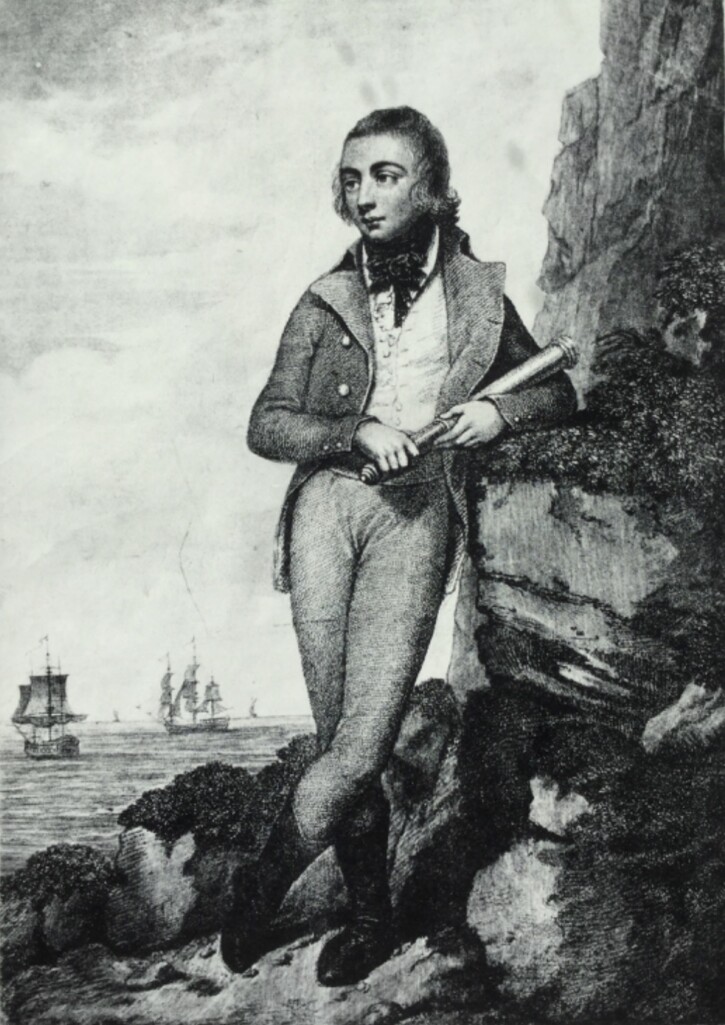The Curious Case of Henry Evelyn Pitfield Sturt
Posted on 4th July 2020
Often family tree research reveals fascinating and sometimes puzzling stories. A good example is the history of Henry Evelyn Pitfield STURT. Henry was the youngest son of Humphrey Sturt MP (1724-1786) and Mary PITFIELD (1740-1807), an immensely rich couple. Humphrey owed his wealth to his grandfather Sir Anthony Sturt who had been a successful businessman in the City of London. Through his mother Humphrey inherited the Moor Crichel estate in Dorset. He served as MP for Dorset from 1754 to 1784. Mary was the sole heiress of her great-grandfather Sir Charles Pitfield, also a City businessman. Mary’s inheritance included most of Hoxton and Shoreditch in London. Pitfield Street remains a main thoroughfare there to this day.

Despite the wealth of his family, as the youngest son of a family of fifteen children, Henry had to make his own way in the world and embarked on a career in the Royal Navy. In 1800 at the age of 19 he became a Lieutenant. Rapidly promoted to Captain, he saw active service during the Napoleonic Wars, being involved in numerous exciting engagements. There was clearly a gallant and romantic side to Henry as, while in the West Indies, he assisted a Portuguese lady, Roza Luiza LIN, in her flight from a convent. The couple subsequently married and had a daughter. I have discovered no further record of the wife. Henry was demobilised in 1810 and served the Navy Reserve until 1825. He divided his time between his country estate, Tubney House near Oxford, and his London home in Kensington.
Thus far Sturt’s life, though interesting, was unexceptional for someone of his time, class, and profession. Then, in the last few years of his life, something extraordinary happened. In 1830 Sturt was involved in what was at the time a high profile court case. This arose from his long-standing friendship with an elderly gentleman, Thomas Adcock GRINDALL, whom he had known since about 1805. So close had the friendship between Grindall and Sturt become that in 1827 Grindall changed his will to leave his entire estate (worth some £100,000, an enormous amount at the time, c£11m today) to Sturt. A condition of the will was that Sturt add the name Grindall to his surname, which he did. Thomas Grindall, aged 80 when he died in 1828, was a widower whose wife has died some thirty years before his death. He had no children. He did though have two nephews, brothers Charles and John Grindall, who were his heirs.
Charles then abducted Thomas to his country home in Tunbridge Wells and ill-treated him, also taking steps to have him declared insane.
Thomas lived in Somerstown (near St Pancras) in London with Charles and his wife. John Grindall was unmarried and lived nearby. Thomas was on bad terms with both nephews and frequently changed his will. In 1826 Thomas indicated that he intended to change his will again in favour of John alone. Charles then abducted Thomas to his country home in Tunbridge Wells and ill-treated him, also taking steps to have him declared insane. This failed and Thomas was rescued by John and brought back to London. There was a suspicion that John had also been involved in the abduction as some sort of conspiracy between the brothers. It was at this point that Sturt became aware of what had happened and was concerned for his old friend, who was frail and frightened. Sturt took him to the shelter of his own home. Thomas continued to live with Sturt until his death. Unsurprisingly, when the 1827 will was proved on Thomas’s death, it was challenged by the Grindall brothers on the basis that the old man was of unsound mind and was under the influence of Sturt. The case was heard in 1830 by a jury under the Lord Chief Justice, Charles ABBOTT, Lord TENTERDON. The judgement went in favour of Sturt. The Grindalls appealed and again the judgement of Sir John NICHOLL went against them.
It is fascinating that in all probability this story would have been lost to history had it not been for the internet and the digitisation of many old books and documents. These provide a wonderfully rich and unexpected resource for family historians. In this case I had simply ‘Googled’ Sturt’s full name. The search resulted in the complete judgement of Sir John Nicholl. For those interested it can be read here – it runs to 25 pages of fascinating detail.
Like many such documents that have survived in isolation, it only tells part of the story and raises as many questions as it answers. My research so far does tell us what happened next. I have found that Sturt died in 1839. His daughter Roza Luiza Josepha Sturt (born 1810) married General Sir John GREY of Morwick, Northumberland. John died in 1856 and Roza in 1885. She is buried in Ryde Old Cemetery, Isle of Wight, where her grave remains. The couple had no children, so there are no descendants of Henry Evelyn Pitfield Sturt Grindall.
It would be wonderful if other members could share any further information they have or might come across that relates to these people.
Michael Pitfield
If you would like, please send us your comment.
Sources
‘Report of the Judgement of the Right Honourable Sir John Nicholl in the case of Sturt Grindall v Grindall and Grindall’ Google Books.
The Royal Collection. Windsor Castle
The London Gazette, August 1828
The Gentleman’s Magazine, October 1839
Royal Naval Biography website
Age of Nelson website
The Isle of Wight Times, 14 May 1885
Ryde Social Heritage Group
Parish Registers
